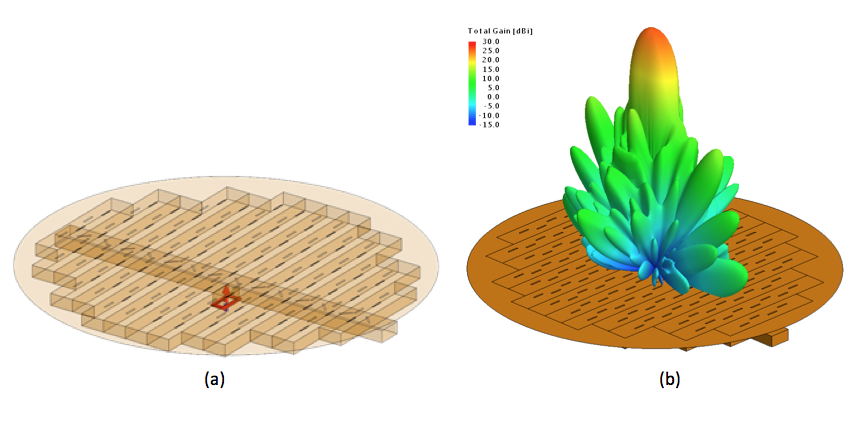How Advances in Electromagnetic Simulation Design Changed The Aerospace Industry
This is a shortened version of Dr. CJ Reddy’s article in 2016 Aerospace Testing. Read the full version with case study here.
As communications grow, there are increasingly more sophisticated antenna systems with associated electronics aboard aircrafts. Advances in electromagnetic (EM) simulations have significantly improved the design process for such systems, resulting in reduced testing time and costs. What does Altair provide to be a part of the change?
Applications of EM simulation using FEKO include antennas analysis, microstrip circuits and biomedical systems, placement of antennas on electrically large structures, and investigation of electromagnetic compatibility (EMC). The applications of advance EM simulation methods are illustrated for the antenna placement, nose-cone radome, and electromagnetic interference due to lightning are presented in the context of aero industry.
One of the most popular antennas for the weather radar is the Slotted Waveguide (SWG) array. It is designed in such a way that it is fed from the bottom with a single waveguide that is orthogonal to the array waveguides. The length, width and spacing of the slots are optimized for the desired pointed beam pattern. Without a doubt, aircrafts require nosecone radomes that can withstand extreme aerodynamic stress.
Traditionally, significant time and financial resources were invested into measurements conducted on aircraft prototypes. The design phase could potentially iterate through several cycles if the electrical systems required modifications due to susceptibility. In contrast, computer simulations assist engineers in easily exploring various scenarios and ensure the actual aircraft will pass the test.
The main benefit of simulations is that they reveal how much shielding is needed to achieve first-pass success in tests. This is important since repeated testing is expensive and adding too much shielding to all the cable harnesses in an aircraft adds a lot of weight and reduces the routing flexibility.
Read more about the case study here, and learn more about Altair FEKO.
As communications grow, there are increasingly more sophisticated antenna systems with associated electronics aboard aircrafts. Advances in electromagnetic (EM) simulations have significantly improved the design process for such systems, resulting in reduced testing time and costs. What does Altair provide to be a part of the change?
Altair FEKO for EM and Antenna Designs
Altair® FEKO® is an EM simulation tool, widely used in the aerospace industry for antenna design, placement, and electromagnetic compatibility studies as well as to emulate antenna measurement process to reduce end of the design testing procedure.Applications of EM simulation using FEKO include antennas analysis, microstrip circuits and biomedical systems, placement of antennas on electrically large structures, and investigation of electromagnetic compatibility (EMC). The applications of advance EM simulation methods are illustrated for the antenna placement, nose-cone radome, and electromagnetic interference due to lightning are presented in the context of aero industry.
Airborne Radomes Can Improve System Performance
A radome (radar dome) is a structural, weatherproof enclosure that protects a radar system or antenna from its physical environment with minimal impact to the electrical performance of the antenna. Radomes must be radio-frequency transparent; therefore, constructed of materials that minimally attenuate the electromagnetic signal transmitted, or received by the antenna. By selecting a proper radome for a given antenna can improve the overall system performance through maintaining alignment by eliminating wind loading, allowing all-weather operation, providing shelter for installation and maintenance, etc. Applications such as satellite communications and airborne weather radar require huge radomes to protect the electrically large antennas.One of the most popular antennas for the weather radar is the Slotted Waveguide (SWG) array. It is designed in such a way that it is fed from the bottom with a single waveguide that is orthogonal to the array waveguides. The length, width and spacing of the slots are optimized for the desired pointed beam pattern. Without a doubt, aircrafts require nosecone radomes that can withstand extreme aerodynamic stress.
Concerns of HIRF on Cables in Aircraft
Lightning and high-intensity radiated fields (HIRF) are major concerns to aircraft designers. Many critical systems, controlled electronically, require cables that span a large portion of the aircraft. These cables are especially vulnerable to receiving fields from lightning, broadcasting antennas and radars. Intricate solutions must address these problems with minimal shielding to meet flexibility, weight, and volume requirements.Traditionally, significant time and financial resources were invested into measurements conducted on aircraft prototypes. The design phase could potentially iterate through several cycles if the electrical systems required modifications due to susceptibility. In contrast, computer simulations assist engineers in easily exploring various scenarios and ensure the actual aircraft will pass the test.
The main benefit of simulations is that they reveal how much shielding is needed to achieve first-pass success in tests. This is important since repeated testing is expensive and adding too much shielding to all the cable harnesses in an aircraft adds a lot of weight and reduces the routing flexibility.
Advances in EM Simulation Are Reducing Testing Time
The aerospace industry is embracing more sophisticated antenna systems. It is certainly our pleasure to be part of the solution and improvement. The advances in electromagnetic (EM) simulations have significantly enhanced the design process for the application of antenna placement, nose-cone radome and electromagnetic interference due to lightning, which resulted in a reduction in testing time and sped up the production.Read more about the case study here, and learn more about Altair FEKO.






